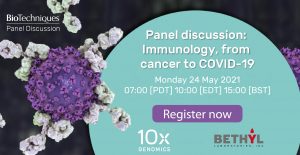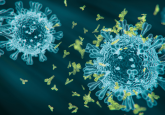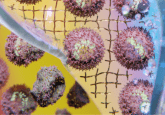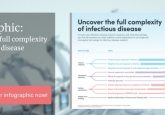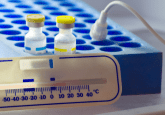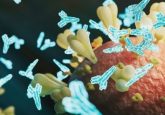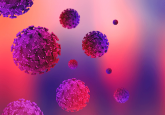Can technology help us win the vaccine race against COVID-19?
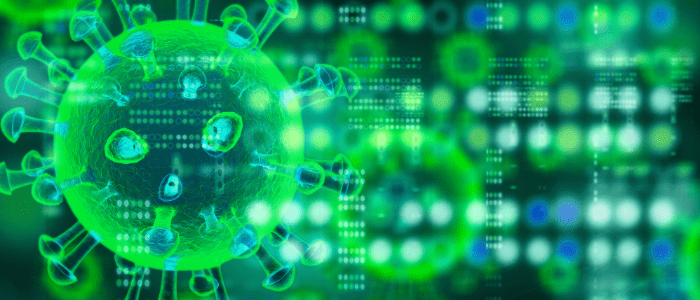
The unprecedented determination and speed with which COVID-19 vaccines were developed and approved has been impressive to say the least. However, the success has brought some concern about the abnormally fast vaccine development procedure. Can vaccines developed so fast be safe?
This was a question often raised in public. It took much effort from the scientific community to convince the doubters that no corners had been cut and no safety measurements neglected, and the accelerated vaccine development was down to excellent co-operations between academic institutions, pharmaceutical and biotech companies, and governmental organizations. Technology also played a key role and although the RNA-based vaccine approach has been presented as a novel technology everywhere, it has been around since 1989 [1], but its promise was only fulfilled by recent breakthroughs in RNA engineering and delivery.
Panel discussion: Immunology, from cancer to COVID-19
Our panelists will discuss vaccine development, addressing unknowns in immune response and leveraging the immune system in disease treatment.
The public opinion has painted the picture of recklessness, but in fact the only risk taken during the vaccine development process relates to the vaccine production, which started before results were available from clinical evaluation and drug approval was received. Generally, production starts only after the vaccine candidate has been approved by authorities such as the FDA or the EMA. However, in this case production started while vaccine candidates were evaluated in phase III clinical trials, which provided a head start for vaccine distribution and administration once authorization was obtained. This was obviously a big risk as there was no guarantee that the vaccine was efficacious while already in production. Fortunately, the clinical studies generated favorable results and both RNA- and adenovirus-based vaccines have been approved in many countries. Mass vaccinations around the world have further confirmed that the COVID-19 vaccines were safe, and much hope was placed on their efficacy allowing life to return to normal as we knew it before the pandemic.
Then, the alarming news about novel SARS-CoV-2 variants arrived, which were thought to show higher transmission rates and enhanced pathogenicity [2]. Already exhausted by the effects of the pandemic for more than a year, with more than 122 million infected individuals and 2.7 million deaths worldwide and a global economy severely damaged, people started to ask whether there is any way out of this – can science and technology come to our aid? Can technology help us win the race against COVID-19?
Science and technology have played crucial roles at all levels of translational medicine related to the COVID-19 pandemic. Scientific discoveries and technology development have facilitated diagnostics of the pandemic including rapid PCR technologies, antibody tests, and next-generation sequencing (NGS) methods to understand the origin of SARS-CoV-2 [3, 4]. The vaccine development has strongly relied on technology, from the initial sequence data on the SARS-CoV-2 genome and bioinformatics, computational approaches and structural modelling to identify appropriate antigen targets. Methods related to antigen production in the form of recombinant proteins, peptides, viral vectors or nucleic acids represent key assets for success. Vaccine delivery comprises an area of enormous importance and although most vaccine candidates have been administered intramuscularly, major technology development has been dedicated to delivery optimization in the form of novel innovative devices and also to finding alternative routes such as intranasal delivery through application of spray formulations.
Another aspect of vaccine administration, especially for nucleic acid-based vaccines, relates to the application of nanoparticles to improve and target delivery, but also particularly in the case of RNA to provide protection against degradation and prevent loss of antigen production in host cells. Taking advantage of innovative technologies, both adenovirus-based and RNA-based COVID-19 vaccines have demonstrated over 90% efficacy in large clinical trials [5]. However, there are still unanswered questions and clear areas of potential improvements:
- How efficacious are the vaccines in the elderly and especially in children?
- How long is the duration of protective immunity from vaccines?
- Do factors such as race, gender, genetics, pre-existing conditions, and other factors affect vaccine efficacy?
- Is the prime-boost vaccination strategy necessary or is a single vaccination sufficient for efficacy?
- Can vaccine candidates be mixed and matched to provide synergistic effects?
- How can the stability, especially for RNA-based vaccines, be improved to facilitate storage and transportation of vaccines?
- How should we deal with existing and emerging SARS-CoV-2 mutations and variants?
- How can we prepare for potential emerging pandemics?
To find out the efficacy of vaccines in the elderly and children, clinical trials in the relevant age groups will directly provide the answer. For instance, the ChAdOx1 nCoV-19 vaccine based on a chimpanzee adenovirus has been subjected to a phase III clinical trial in older individuals [6]. Moreover, as mass vaccinations have targeted the elderly and healthcare workers in the first phase, information on vaccine efficacy will be available soon. Clinical studies have also been planned for children as young as 6 years of age.
The duration of the protective immunity of existing vaccines will be determined from the analysis of global mass vaccinations. As more than 345 million doses have been administered and 101 million people have been fully vaccinated worldwide (as of March 21, 2021), there will be plenty of data for epidemiologists to digest with time. Obviously, data from clinical trials that started in 2020 will provide additional information. The effect of race, gender, genetics, pre-existing conditions, and other factors will also be subjected to scientific evaluation applying various tools in bioinformatics, genomics, proteomics, medicine and epidemiology in large populations of vaccinated individuals.
The points addressed above involve straight–forward data analysis and rely to a large extent on existing technologies. However, the rest of the issues can additionally profit from novel innovations. For instance, the question of prime-boost regimens, where two vaccinations take place at two or several weeks intervals have been replaced by a single immunization with an adenovirus-based vaccine candidate (NCT04526990). In addition to applying this adenovirus-vector approach, further development of more stable RNA-based vaccines and the use of self-amplifying RNA virus vectors might provide the technology to allow proficient immune responses after a single vaccine administration. The approach of mixing and matching COVID-19 vaccine candidates is already in full swing [5]. For instance, there are plans to evaluate the combination of the ChAdOx1 nCoV-19 vaccine and the Russian Sputnik V vaccine based on adenovirus Ad26/Ad5 vectors in a clinical setting. Similarly, a prime-boost regimen for ChAdOx1 nCoV-19 and the lipid nanoparticle (LNP)-mRNA vaccine BNT162b2 is planned for evaluation in humans [7]. Furthermore, data from a heterologous vaccination strategy in mice consisting of a self-amplifying RNA vector-based vaccine and ChAdOx1 nCoV-19 dominantly elicited cytotoxic T cell and Th1+ T cell responses superior to each homologous vaccination alone [8].
The stability and delivery of RNA are issues to address, which could improve both vaccine efficacy and relax the storage and transport requirements. Technology development can play a crucial part on two levels. First, RNA stability can be improved by engineering of various RNA sequences. Modifications made to the 5’ and 3’ end untranslated regions of the mRNA and the poly(A) tail have enhanced both RNA stability and translation efficacy. Moreover, codon optimization and incorporation of pseudouridine analogs have provided a positive effect on mRNA stability and translation, resulting in enhanced immune responses. Encapsulation of target mRNA in LNPs has facilitated cellular delivery and protected against premature RNA degradation. Although these technologies have been applied for the existing RNA-based COVID-19 vaccines, further engineering efforts should be considered.
The problems encountered with the need for low (-20°C) to ultra-low (-80°C) storage and transport conditions for RNA-based vaccines have triggered the search for methods to improve vaccine stability and allow storage at more user-friendly temperatures. In this context, although addition of ethanol could restore aggregation and loss of efficacy of LNPs subjected to freeze—thaw cycles, the approach was impractical as LNP solutions had to be dialyzed prior to use [9]. However, addition of trehalose or sucrose to LNP solutions prior to lyophilization allowed storage at room temperature and reconstitution in an aqueous buffer without affecting the delivery potency. This could present a solution for novel LNP-mRNA vaccine candidates.
In the context of the SARS-CoV-2 variants, meaningful information can be acquired on already existing and emerging mutants by NGS and computational biology in the form of sequencing data and in silico models to evaluate the efficacy of existing vaccines, respectively [2]. Structure-based approaches can provide useful information for the design of novel vaccines targeting existing and emerging mutants, which have been predicted or shown to reduce the efficacy of existing vaccines. Nucleic acid-based vaccines can be quickly subjected to modifications of more efficient tailor-made versions to specifically target SARS-CoV-2 variants [10]. Modern technologies should also focus on the design of pan-coronavirus vaccines, which can provide a broader range of protection against current and future variants and to be better prepared for potential emerging outbreaks and prevent them from reaching pandemic levels. Although other factors related to better control of animal care, prevention of illegal animal trade, rethinking of travel policies and better hygiene are important in the fight against pandemics, appropriate and efficient development and application of innovative technologies will certainly contribute to being able to overcome the COVID-19 pandemic.
- Malone RW, Felgner PL, Verma IM. Cationic liposome-mediated RNA transfection. Proc. Natl. Acad. Sci. USA doi:10.1073/pnas.86.16.6077 (1989).
- Mahase E. Covid-19: Novavax vaccine efficacy is 86% against UK variant and 60% against South African variant. Br. Med. J. doi:10.1136/bmj.n296 (2021).
- Yüce M, Filiztekin E, Ozkaya KG. COVID-19 diagnosis – A review of current methods. Biosens. Bioelectron. doi:10.1016/j.bios.2020.112752 (2021).
- Chiara M, D’Erchia AM, Gissi C, Manzari C, Parisi A, Resta N et al. Next generation sequencing of SARS-CoV-2 genomes: challenges, applications and opportunities. Brief Bioinform. doi:10.1093/bib/bbaa297 (2020).
- Lundstrom K. Viral vectors for COVID-19 Vaccine Development. Viruses doi:10.3390/v13020317 (2021).
- Ramasamy MN, Minassian AM, Ewer KJ et al. Safety and immunogenicity of ChAdOx1 nCoV-19 vaccine administered in a prime-boost regimen in young and old adults (COV002): a single-blind, randomised, controlled, phase 2/3 trial. Lancet doi:10.1016/S0140-6736(20)32661-1 (2021).
- Ledford H. Could mixing COVID vaccines boost immune response? Nature doi:10.1038/d41586-021-00315-5 (2021).
- Spencer AJ, McKay PF, Belij-Rammerstorfer S et al. Heterologous vaccination regimens with self-amplifying RNA and Adenoviral 2 COVID vaccines induce superior immune responses than single dose vaccine 3 regimens in mice. bioRxiv doi:10.1101/2021.01.28.428665 (2021).
- Ball RL, Bajaj P, Whitehead KA. Achieving long-term stability of lipid nanoparticles: examining the effect of pH, temperature, and lyophilization. Intl. J. Nanomed. 12, 305-315 (2017).
- Zheng L, Li D, Tong W, Shi T, Ning B. Biochemical features and mutations of key proteins in SARS-CoV-2 and their impacts on RNA therapeutics. Biochem. Pharmacol. doi:10.1016/j.bcp.2021.114424 (2021).
